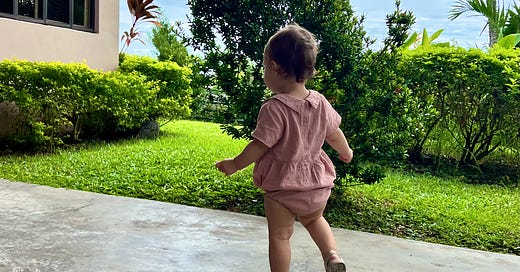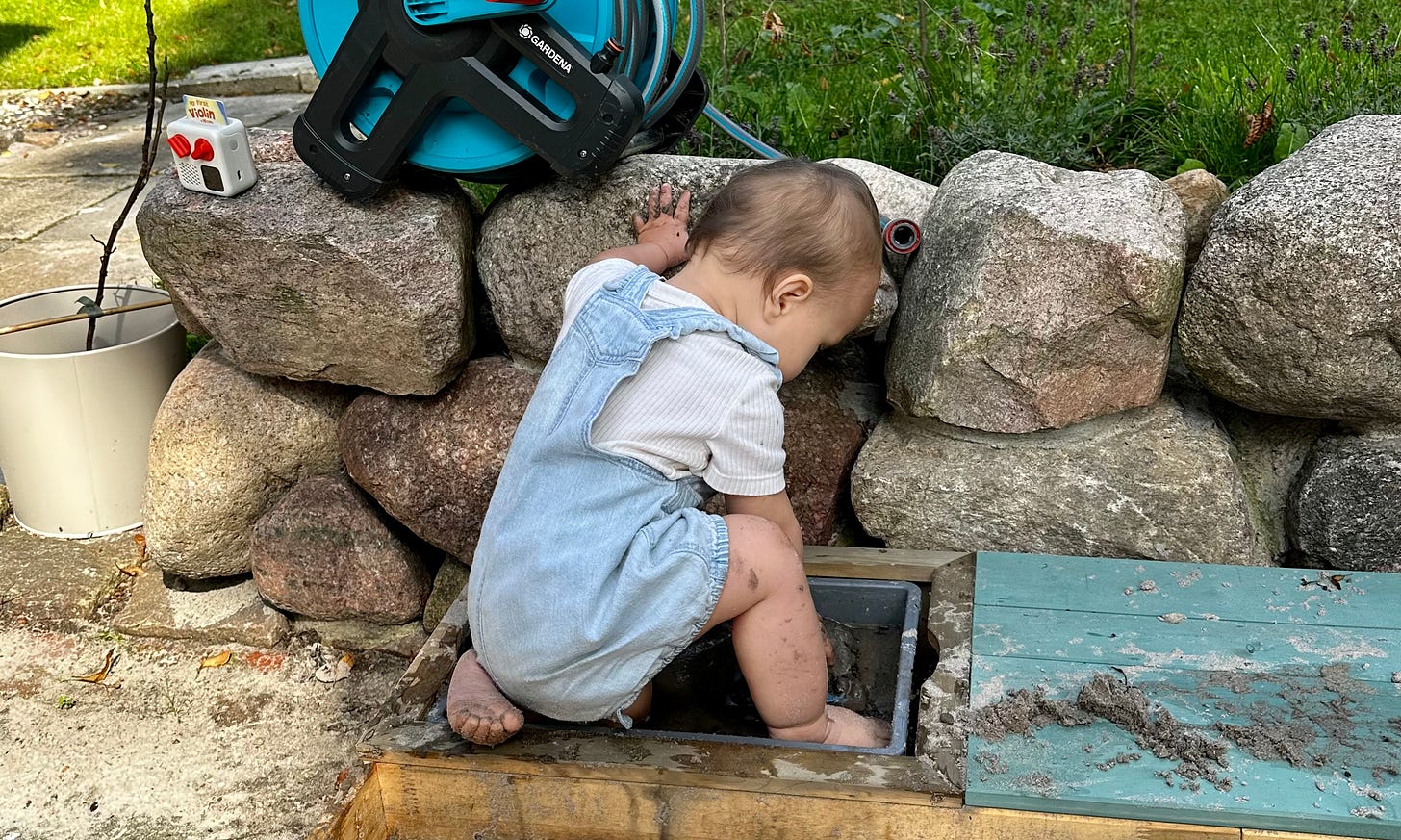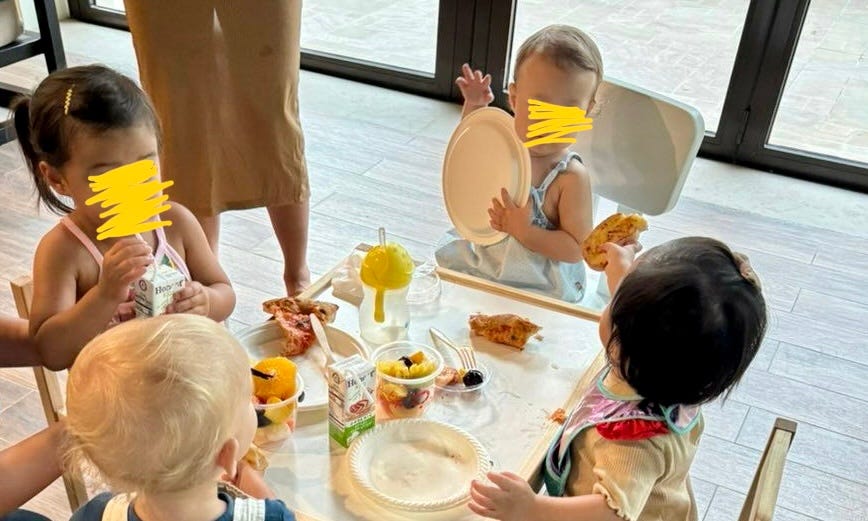Autonomy-Supportive Parenting
Using the Self-Determination Theory to parent happier, more confident kids
This morning, my friend Dani made a comment about how my daughter is so autonomous, and it made me think about how I have been very intentional about letting her be “her own person”. Before she was even born, I had the intention to encourage her to be independent, competent, and confident. My husband and I tried to build our parenting style around some books we read on Montessori and "gentle parenting" techniques, but that doesn’t completely characterize it. I hadn't found a concrete parenting style to describe what we do, until very recently.
It’s called Autonomy-Supportive Parenting. Derived from the Self-Determination Theory, this approach emphasizes fostering a person’s fundamental needs—autonomy, competence, and relatedness– from childhood. I discovered the term in a substack post by Melinda Wenner Moyer cross-posted by Emily Edlynn, the author of "Autonomy-Supportive Parenting: Reduce Parental Burnout and Raise Competent, Confident Children." In her book, she sheds light on the significance of addressing these needs to cultivate independent, confident, and socially connected individuals.
According to Edlynn, studies have found that children raised with this form of parenting “report overall greater life satisfaction, stronger psychological health – fewer anxiety and depressive symptoms and better performance and competence in school, as well as a more positive attitude about school. And higher self-esteem.” In turn, “parents who are practicing autonomy-supportive parenting are describing less stress, greater needs fulfillment for themselves, and a stronger general sense of well-being.”
What is the Self-Determination Theory?
The Self-Determination Theory (SDT) serves as the foundation for Autonomy-Supportive Parenting. It explores intrinsic and extrinsic sources of motivation, emphasizing the interplay between external forces and internal motives. SDT highlights the role of autonomy, competence, and relatedness in fostering high-quality motivation, engagement, and overall well-being. The theory argues that unsupportive or thwarted psychological needs can have detrimental effects on an individual's wellness within a social context.
How We Practice Autonomy-Supportive Parenting
Autonomy
Even since Baby A was a tiny tot, we’ve championed her independence. One great example was how we embraced baby-led weaning, introducing solids at 4 months. We started with solids relatively early because she showed all the signs of readiness then. We would do a combination of spoon feeding purees, letting her hold soft foods herself, and letting her hold and play with the spoon herself. Of course, this gets very messy as she didn't have the motor skills to eat on her own, but with patience and continuously offering the opportunity for her to try and practice herself, she built up her skills and was eating independently with a spoon and fork, and drinking from an open cup before she even turned one. These days, she sits in a high chair at the restaurant and eats her meal by herself like the rest of us. We try to model behaviours and skills to teach her how to do things on her own as much as possible.
Another way in which we give her a lot of autonomy is in playing and exploring by herself. There isn't always someone interacting with her or watching her 24/7. This has really helped her learn to keep herself entertained. Don’t worry, the room she is in is always baby-proofed! And if not, one of us stays in the room with her, but lets her play by herself. For now, she doesn’t seem to need constant attention and interaction, which is great for us, too.
Competence
Ensuring A’s confidence and independence has been a top priority for us. We deliberately avoided an over-protective nanny or caregiver to prevent constant restrictions like "do not climb" or "do not touch." Instead, we've created a safe environment where she can make mistakes, like falling off the Pikler triangle or couch, without getting hurt. We always tell her, “When mama and papa say no it’s always for your safety or health.”
Our approach is to adapt the environment, not restrict her. We encourage her to navigate frustration, offering positive reinforcement with phrases like "you got this!" and providing tips for improvement. We hope this will foster a positive inner voice as she grows.
Recognizing the importance of age-appropriate challenges, we help her on tasks too far beyond her developmental level to safeguard her confidence. This concept called "scaffolding" is crucial; we understand Ari's capabilities and present challenges just above her current skills, allowing her to progress incrementally. It's about guiding her growth without overwhelming expectations, ensuring she builds confidence at her own pace. It basically means understanding where your child is at, what they are capable of, and letting them try just one level above rather than expecting them to run when they can't even crawl yet.
Relatedness
Connection, attachment, and socialisation are super important. Right from birth, we emphasized this by responding to baby A’s cries, holding her, and establishing eye contact. We understand that building relationships starts with parents and expands to others around them. Early on, I made her some flashcards with relatives' names and faces, fostering familiarity even with those she doesn't see often.
As often as possible, we try to meet with other babies to help socialize her with her peers as well. Babies socializing together promotes crucial developmental aspects such as language acquisition, conflict resolution, emotional regulation, motor skills, problem-solving, and the formation of early bonds. Experiencing diversity and positive interactions in a supportive environment contributes to their overall confidence and adaptability.
Quality time is a priority for us – being fully present when we’re together or at least when she is trying to make eye contact or communicate. W make it a point to respond to all her communication cues, even when it means saying “no”, to let her know we are attentive and acknowledge her needs and feelings. It's about consistently being there for her, nurturing a sense of security and connection. Ensuring A feels loved and respected is paramount.
Additionally: A Note on Communication
In addition to autonomy-supportive parenting, we prioritize communication in our parenting style. We used sign language and spoke “parentese” from day one, and are fortunate to have a highly communicative baby. Now that she is a toddler, we communicate easily and can identify her needs and wants. This enables effective scaffolding, as she can express herself. It promotes independence as she can communicate when she needs help or wants to do something on her own. Being able to understand each other also allows us to give her more control by offering her choices and allowing her to make decisions and solve problems with us together.
Even before she started vocalizing, we engaged in communication games like peek-a-boo and mimicking her sounds. Eventually she would mimic my sounds as well. This form of imitation and copying is a foundational building block for improving a child's speech and language skills. Little fun exercises like this encourage babies to learn how to accurately produce target speech sounds and grow their vocabulary. At 13 months, she's already using over 40 words across English, German, Spanish, and Cebuano.
Is this for everyone?
The great thing about this style of parenting is that it’s not a formula or list of dos and don’ts. It’s more of a framework that you can build specific tools and approaches around. In essence, it’s about relinquishing the anxiety and control that we may feel as parents and taking a step back. It’s about trying to engage with and understand your child as a full person rather than judge them by their behaviour. For us, it’s about having a clear objective of what core values and principles we want to foster in our home, and treating baby A as one of us.
Already a subscriber? Please write me to let know what else you’re interested in and how I can make this newsletter more valuable to you.








Didn't even know there was a style of parenting called this (ASP). Thanks for the article, Annette! Kudos to Baby A for a huge and diverse vocab at 13 months - wow :)